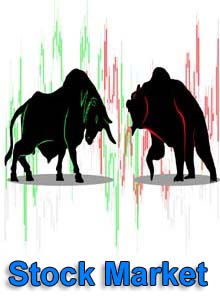Stock Market History
Stock Market History
A stock market, equity market, or share market is the aggregation of buyers and sellers of stocks (also called shares), which represent ownership claims on businesses; these may include securities listed on a public stock exchange, as well as stock that is only traded privately, such as shares of private companies which are sold to investors through equity crowdfunding platforms. Investment is usually made with an investment strategy in mind.
The history of the share market of India dates back to 1875. The name of the first share trading association in India was “Native Share and Stock Broker's Association” which later came to be known as Bombay Stock Exchange (BSE).
In India, the share market is a term used to refer to the two major stock exchanges in the country— the Bombay Stock Exchange (BSE) and the National Stock Exchange of India (NSE). There are also 22 regional stock exchanges.
History of the Indian Share Market
- The Indian stock market traces its history back to the late 18th century when the trading floor was under the shade of a sprawling banyan tree opposite the Town Hall in Mumbai. A few people would meet under this tree to informally trade in cotton.
- This was because Mumbai was a busy trading port, and essential commodities were traded here often.
- The Companies Act was introduced in 1850, following which investors started showing an interest in corporate securities. The concept of limited liability also put an appearance around this time.
- By 1875, an organization is known as ‘The Native Share and Stock Brokers Association’ came into being. This was the predecessor of the BSE.
- In 1894, the Ahmedabad Stock Exchange came primarily to enable dealing in the shares of textile mills in the city.
- The Calcutta Stock Exchange was formed in 1908 to facilitate a market for shares of plantations and jute mills.
- It was in 1920 that the Madras Stock Exchange took shape.
- In 1957, the BSE was the first stock exchange to be recognized by the Government of India under the Securities Contracts Regulation Act.
- The SENSEX was launched in 1986, followed by the BSE National Index in 1989.
- The Securities and Exchange Board of India (SEBI) was constituted in 1988 to monitor and regulate the securities industry and stock exchanges. In 1992 it became an autonomous body with completely independent powers.
- In 1992, the NSE was formed as the first demutualized electronic exchange to ensure market transparency.
- NSE began operations in the Wholesale Debt Market (WDM) segment in 1994, the equities segment in 1994, and the derivatives segment in 2000.
- In 1995, the BSE switched to an electronic trading system from the open-floor system.
- In 2015, SEBI was merged with the Forward Markets Commission (FMC) to strengthen commodities market regulation, facilitate domestic and foreign institutional participation, and launch new products.

